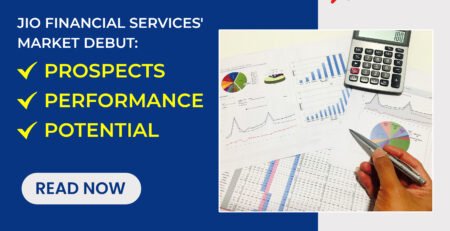Top Mutual Fund Buys and Sells June 2025: Strategic Portfolio Moves Reshape Indian Market Landscape
Introduction: Decoding the June 2025 Mutual Fund Market Movements
The Indian mutual fund industry witnessed significant portfolio reshuffling in June 2025, with major buying concentrated in stocks like Asian Paints, Dixon Technologies, and Vishal Mega Mart, alongside strategic divestments from established bluechips. This comprehensive analysis examines the strategic decisions made by fund managers across large-cap, mid-cap, and small-cap segments, providing investors with crucial insights into institutional investment patterns and emerging market trends.
Mutual funds loaded up on banking and pharma stocks in June 2025, while many trimmed insurance holdings, indicating a clear sectoral preference shift that reflects broader economic expectations and risk assessment strategies employed by portfolio managers.
Large-Cap Segment: Strategic Picks and Profit-Taking Moves
Major Large-Cap Acquisitions
Asian Paints: Paint Industry Leadership Bet The inclusion of Asian Paints among top mutual fund buys signals confidence in the decorative paints sector despite competitive pressures. Fund managers appear to be betting on the company’s market leadership, distribution network strength, and potential recovery in rural demand. The stock represents a defensive play within consumer discretionary, offering stability during market volatility while maintaining growth potential through product innovation and market expansion.
Infosys: IT Sector Consolidation Play Mutual funds’ renewed interest in Infosys reflects optimism about the IT services sector’s resilience and growth prospects. Despite concerns over margin pressures and client spending patterns, fund managers are positioning for potential benefits from AI adoption, digital transformation acceleration, and the company’s strategic initiatives in emerging technologies.
Vishal MegaMart: Retail Sector Opportunity The aggressive buying in Vishal MegaMart indicates fund managers’ confidence in the value retail segment’s growth potential. This move reflects broader themes around consumption patterns, particularly in tier-2 and tier-3 cities, where value-conscious shopping continues to gain traction.
Biocon and Siemens Energy: Sectoral Diversification The inclusion of Biocon represents a pharmaceutical sector bet, while Siemens Energy additions indicate infrastructure and renewable energy optimism. These picks demonstrate portfolio managers’ efforts to capture emerging growth themes while maintaining sectoral diversification.
Large-Cap Divestments: Risk Management in Action
TCS: Profit Booking in IT Giant The significant selling in TCS, despite its market leadership, suggests profit-taking after substantial gains and potential concerns about near-term growth headwinds. Fund managers appear to be rotating capital toward more attractive risk-reward opportunities within their portfolios.
Coal India: ESG and Transition Concerns Divestment from Coal India aligns with broader ESG considerations and the ongoing energy transition narrative. Institutional investors are increasingly factoring environmental concerns and long-term sustainability into their investment decisions.
DLF, Kotak Bank, and Indus Towers: Sectoral Rotation The selling in DLF reflects real estate sector caution, while Kotak Bank sales indicate banking sector selectivity. Indus Towers divestment suggests concerns about telecom infrastructure growth prospects and regulatory uncertainties.
Mid-Cap Momentum: Growth and Value Discovery
Strategic Mid-Cap Additions
Dixon Technologies: Electronics Manufacturing Surge Heavy buying in Dixon Technologies reflects fund managers’ conviction in India’s electronics manufacturing story. The company’s position in the PLI scheme beneficiary list and growing domestic electronics demand make it an attractive play on the Make in India theme.
Trent: Retail Excellence Story Mutual fund accumulation in Trent demonstrates confidence in organized retail growth and the company’s successful format expansion. The stock represents a play on India’s evolving consumer preferences and retail modernization trends.
Kaynes Technology: Specialized Electronics Play Kaynes Technology additions indicate fund managers’ focus on niche electronics manufacturing and engineering services. The company’s specialized capabilities in defense and aerospace electronics align with India’s push for self-reliance in critical sectors.
Aditya Birla Capital and UCO Bank: Financial Services Bet These additions reflect selective optimism within financial services, with fund managers betting on specific business models and turnaround stories rather than broad-based sector exposure.
Mid-Cap Exits: Profit Taking and Risk Reduction
Canara Bank and NHPC: Selective Trimming Divestments from Canara Bank and NHPC indicate profit-taking in PSU stocks that have performed well, with fund managers potentially rotating to private sector alternatives or reducing concentration risk.
Prestige Estates, GIC RE, and Jindal Stainless: Sectoral Caution These exits reflect cautious positioning in real estate, insurance, and commodity sectors, where fund managers are likely concerned about cyclical headwinds or valuation concerns.
Small-Cap Strategies: Opportunistic Plays and Risk Management
Small-Cap Investment Themes
Jaiprakash Power: Infrastructure Turnaround The addition of Jaiprakash Power suggests fund managers are betting on infrastructure recovery and potential corporate restructuring benefits. This represents a higher-risk, higher-reward play within the infrastructure space.
Gabriel India and VIP Industries: Consumer and Auto Ancillary These additions reflect confidence in domestic consumption themes and auto sector recovery. Gabriel India benefits from the automotive replacement market, while VIP Industries plays on travel and lifestyle product demand recovery.
Anand Rathi Wealth and PC Jeweller: Wealth Management and Jewelry Fund managers appear to be positioning for wealth management industry growth and potential jewelry sector recovery, representing specific thematic plays within their respective sectors.
Small-Cap Divestments: Risk Reduction Focus
IEX, Suzlon Energy, and Vedanta: Commodity and Energy Caution The selling in these stocks indicates fund managers’ concerns about cyclical sectors and their preference to reduce exposure to commodity price volatility and energy sector uncertainties.
HUDCO and Manappuram: Financial Services Trimming These exits suggest portfolio managers are being selective within financial services, possibly reducing exposure to specialized lending businesses in favor of mainstream banking opportunities.
Market Implications and Investment Strategy Analysis
Sectoral Rotation Patterns
The June 2025 mutual fund moves reveal clear sectoral preferences, with technology, pharmaceuticals, and consumer discretionary receiving increased attention while traditional sectors like mining, energy, and some financial services face reduced allocation. This rotation reflects fund managers’ assessment of medium-term growth prospects and risk-reward equations across different sectors.
Market Capitalization Strategy
The buying and selling patterns across market capitalizations indicate a nuanced approach by fund managers. Large-cap selections focus on quality and defensive characteristics, mid-cap picks emphasize growth potential and emerging themes, while small-cap decisions appear more opportunistic and tactical in nature.
Risk Management Framework
The mutual fund AUM increased 77% post-Covid, indicating the significant growth in assets under management that has influenced portfolio construction strategies. Fund managers are balancing growth objectives with risk management requirements, leading to more sophisticated portfolio construction approaches.
Economic Context and Market Environment
Macro-Economic Factors
The total number of accounts (or folios as per mutual fund parlance) as on June 30, 2025 stood at 24.13 crore (241.3 million), highlighting the massive scale of retail participation in mutual funds. This unprecedented investor base influences fund managers’ decision-making processes and portfolio construction strategies.
SIP Growth and Retail Participation
Monthly SIP inflows witnessed an impressive 48% growth year-over-year, surging from Rs 17,073 crore in November 2023 to Rs 25,320 crore in November 2024, demonstrating sustained retail investor confidence. This consistent flow of funds provides portfolio managers with stable capital for strategic investments while reducing the impact of market volatility on fund performance.
Investment Themes and Future Outlook
Emerging Investment Narratives
The June 2025 portfolio moves highlight several key investment themes gaining traction among institutional investors:
- Digital Transformation Acceleration: Continued focus on technology companies that enable digital transformation across industries
- Sustainable Growth Models: Preference for companies with sustainable competitive advantages and ESG-compliant business models
- Domestic Consumption Recovery: Strategic positioning in companies benefiting from India’s consumption growth story
- Manufacturing Renaissance: Investments aligned with India’s manufacturing capabilities and export potential
Portfolio Construction Evolution
Modern mutual fund portfolio construction has evolved beyond traditional metrics to incorporate:
- ESG Integration: Environmental, social, and governance factors increasingly influence investment decisions
- Thematic Diversification: Beyond sectoral diversification, funds focus on thematic exposure across various growth drivers
- Risk-Adjusted Returns: Greater emphasis on Sharpe ratios and risk-adjusted performance metrics
- Liquidity Management: Enhanced focus on portfolio liquidity to meet redemption requirements
Regional and Global Context
Indian Market Positioning
The mutual fund industry’s strategic moves reflect India’s evolving position in global markets. Fund managers are positioning portfolios to benefit from:
- Demographic Dividend: Companies serving India’s young population and growing middle class
- Infrastructure Development: Investments in companies supporting India’s infrastructure modernization
- Technology Leadership: Focus on Indian companies developing global technology solutions
- Export Competitiveness: Investments in companies with strong export potential and global market presence
Comparative Analysis with Global Trends
Indian mutual fund strategies increasingly align with global investment themes while maintaining domestic focus:
- Sustainability Focus: Growing emphasis on sustainable investing practices
- Technology Integration: Increased allocation to technology-enabled businesses
- Healthcare Innovation: Strategic investments in healthcare and pharmaceutical companies
- Financial Services Evolution: Focus on digital financial services and fintech companies
Risk Assessment and Portfolio Impact
Concentration Risk Management
The diverse nature of June 2025 mutual fund moves demonstrates sophisticated risk management approaches:
- Sector Diversification: Balanced exposure across multiple sectors to reduce concentration risk
- Market Cap Distribution: Strategic allocation across large, mid, and small-cap segments
- Geographic Diversification: Focus on companies with diverse revenue streams and market exposure
- Liquidity Management: Maintaining adequate liquidity to meet investor redemption requirements
Volatility Mitigation Strategies
Fund managers employ various strategies to mitigate portfolio volatility:
- Quality Focus: Emphasis on companies with strong fundamentals and stable business models
- Defensive Positioning: Strategic allocation to defensive sectors during uncertain market conditions
- Active Management: Dynamic portfolio adjustments based on market conditions and opportunities
- Risk Monitoring: Continuous monitoring of portfolio risk metrics and market exposure
Performance Attribution and Fund Manager Insights
Decision-Making Framework
The June 2025 portfolio changes reflect sophisticated decision-making frameworks employed by fund managers:
- Fundamental Analysis: Deep research into company fundamentals and growth prospects
- Technical Analysis: Integration of technical indicators and market momentum factors
- Macro-Economic Assessment: Consideration of broader economic trends and policy implications
- Valuation Discipline: Maintaining valuation discipline while pursuing growth opportunities
Performance Expectations
Fund managers’ strategic moves indicate expectations for:
- Medium-term Growth: Positioning for sustained growth over 2-3 year periods
- Market Leadership: Focus on companies with potential for market share gains
- Innovation Premium: Willingness to pay premium valuations for innovative business models
- Execution Excellence: Emphasis on management quality and execution capabilities
Investor Implications and Strategic Recommendations
Retail Investor Guidance
Individual investors can derive several insights from institutional investment patterns:
- Diversification Benefits: The importance of maintaining diversified portfolios across sectors and market capitalizations
- Long-term Perspective: Focus on long-term wealth creation rather than short-term market movements
- Quality Over Quantity: Emphasis on quality companies with sustainable competitive advantages
- Professional Management: Benefits of professional fund management for navigating complex market conditions
Portfolio Construction Insights
Key takeaways for portfolio construction include:
- Sector Rotation Awareness: Understanding cyclical sector preferences and rotation patterns
- Market Cap Strategy: Balanced approach across different market capitalization segments
- Risk Management: Importance of risk management and portfolio monitoring
- Performance Evaluation: Focus on risk-adjusted returns and long-term performance metrics
Conclusion: Navigating the Evolving Investment Landscape
The June 2025 mutual fund buying and selling patterns reveal a sophisticated approach to portfolio management in an increasingly complex market environment. Fund managers are balancing growth objectives with risk management requirements while positioning for emerging investment themes and market opportunities.
The strategic moves across large-cap, mid-cap, and small-cap segments demonstrate the importance of active portfolio management and the value of professional investment expertise. The surge in assets was complemented by a rise in the number of investors, with the number of folios adding an investor base of INR 8.1 million, highlighting the growing sophistication of the Indian investment landscape.
For investors, these patterns provide valuable insights into institutional thinking and market trends. The emphasis on quality companies, sustainable business models, and emerging growth themes offers a roadmap for long-term wealth creation in the Indian market.
As the mutual fund industry continues to evolve, investors can benefit from understanding these institutional investment patterns while maintaining disciplined, long-term investment approaches aligned with their financial objectives and risk tolerance levels.
This analysis is based on publicly available information about mutual fund portfolio changes and should not be considered as investment advice. Investors should conduct their own research and consult with financial advisors before making investment decisions.












